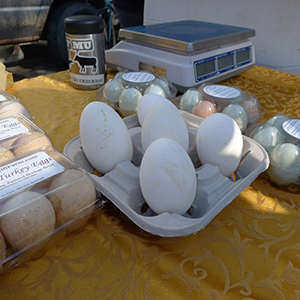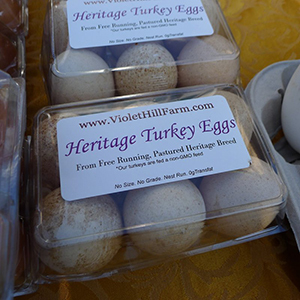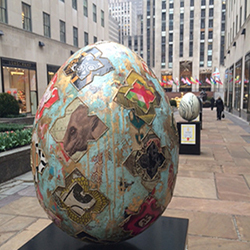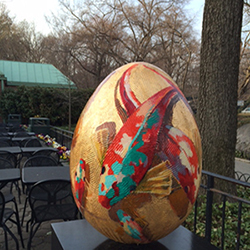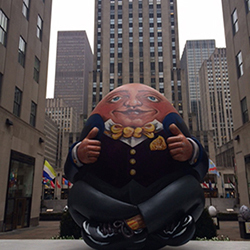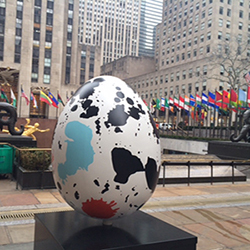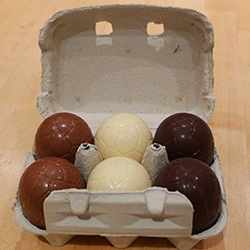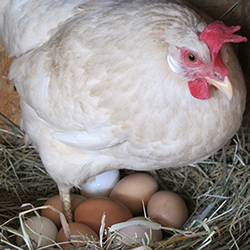It's the annual moment of fame for the egg, star of the spring holidays of Passover/Easter as well as one of the early season offerings in farmers markets. Weeks before the first signs of green, eggs become a little more abundant as the chickens are the first to recognize the lengthening days and slightly warmer temperatures. Can a great holiday meal be far behind?
The egg is tied to spring and to both holiday traditions with a wide-ranging array of explanations. Spring is synonymous with renewal -- life beginning again with budding trees and flowers, new crops and hope after a long winter. (Don't we know that after our extended snowy winter?)
Obviously the egg symbolizes new life as well as rebirth. Its round/oval shape represents the roundness of life cycles: the chick breaking open the shell to emerge into the world. I have always heard that the hard-boiled egg of the Passover meal symbolizes the Jewish people -- the more they are oppressed, the tougher they become.
Eggs are the traditional mourners' fare upon returning from a funeral, so Jews are reminded of the destruction of the Temple when eating the Passover egg. The bowl of salt water into which the egg is immersed symbolizes the tears of an oppressed nation.
When the Jewish people left Egypt, life began for them as a new nation -- a parallel to the egg representing the beginning of a new life. Other intriguing thoughts about the symbolism of the egg came from Daniel Brenner:
"People....might say, 'Peeling an egg is done to free the egg from its shell --but this peeling is a difficult task, just like the peeling away of the slavery mentality of our ancestors.' Or someone might say, 'An egg, due to its shape, cannot stand without help. From this we learn that our ancestors needed help to stand up against Pharaoh.'"
Easter eggs are far more beautiful and alluring than the peeled or burnt Passover egg. The resurrection of Jesus is seen in the rebirth and renewal of the egg. In Medieval Europe, eggs were not consumed during Lent, giving rise to the practice of preserving or painting them and then eating them on Easter to celebrate.
In parts of the Middle East and in Greece, eggs are painted bright red, symbolizing the blood of Christ. Germans prepare green eggs on Holy Thursday. Poland and the Ukraine evolved a method of applying wax, silver and gold and boiling them to decorate eggs.
Eggs are also unique in that they have allowed the evolution of so many delightful applications. Egg rolling contests are big events at home and in communities across the country, most notably on the White House lawn. Egg decorating is an art form for all ages -- painting, perfecting the art of hollowing them out, or hanging them. Eggs themselves are trendy art as seen in the current Faberge Egg Hunt in New York City. Now I would trade my hard-boiled egg in salt water for one of these!
And if I can't get a fabulous Faberge inspired creation, there is another great egg idea -- the chocolate egg! Neither mournful nor sacrificial, it is a joyful egg and embraced by eaters of all traditions. And behold -- these look like they came directly from the chocolate chicken herself. Do you think she nibbled on some chocolate matzoh? I'm getting with my Katchkie Farm flock and fixing them some new feed this spring!
Happy and delicious holidays!

